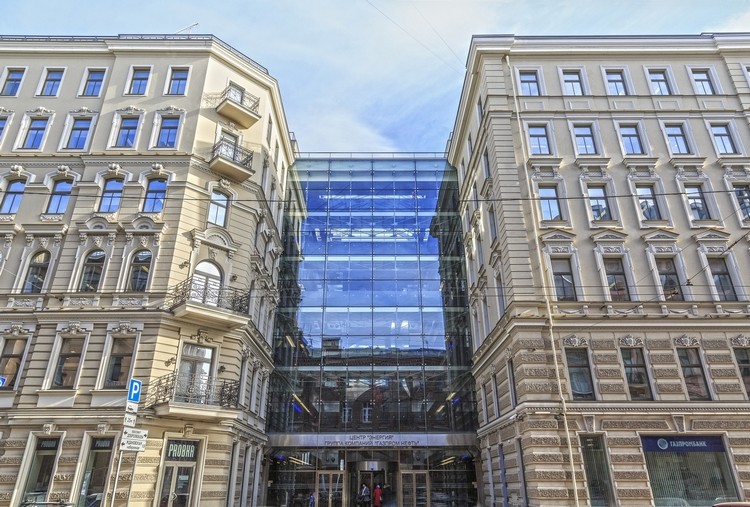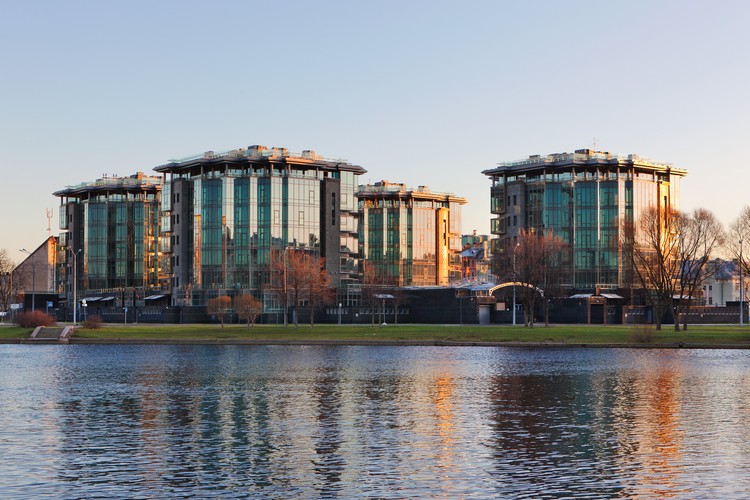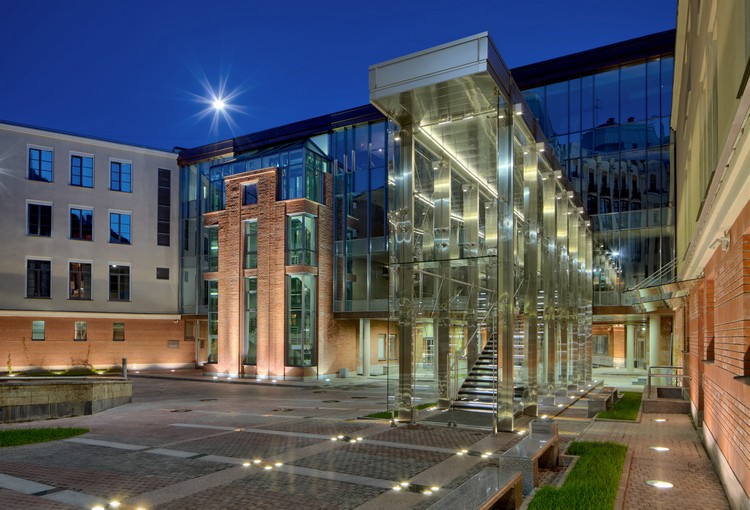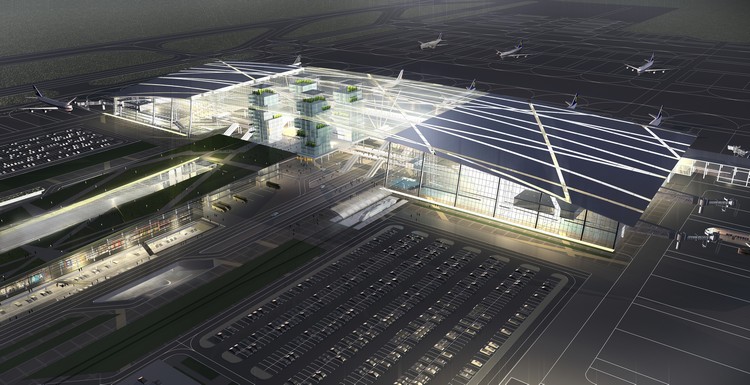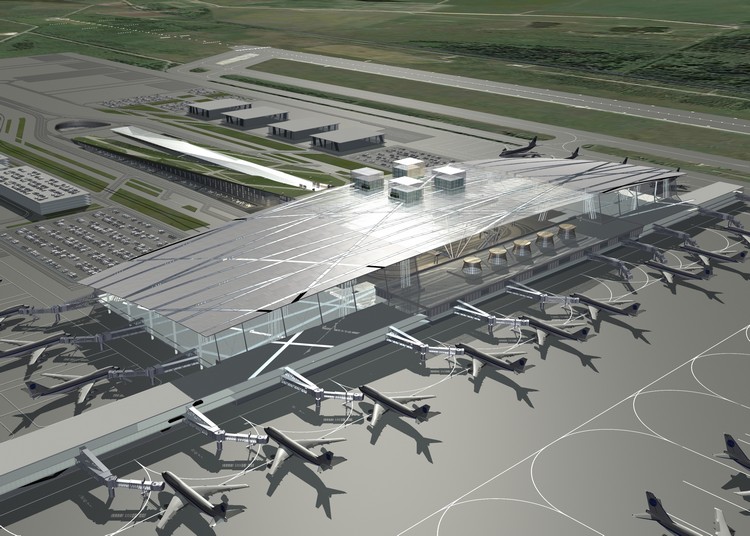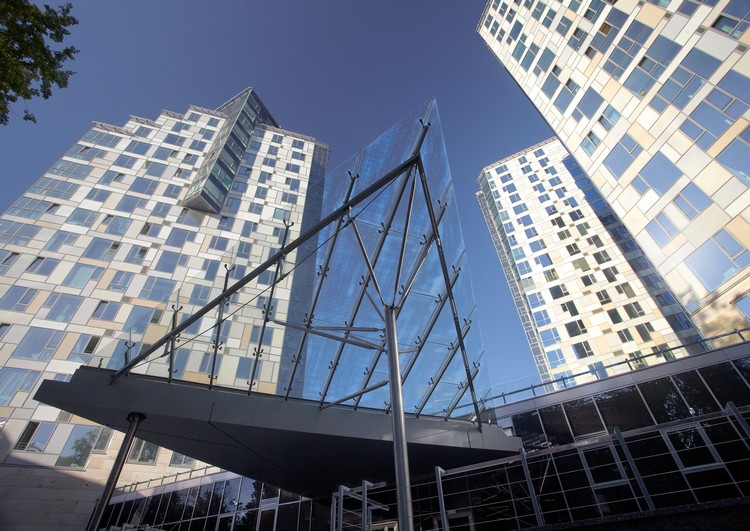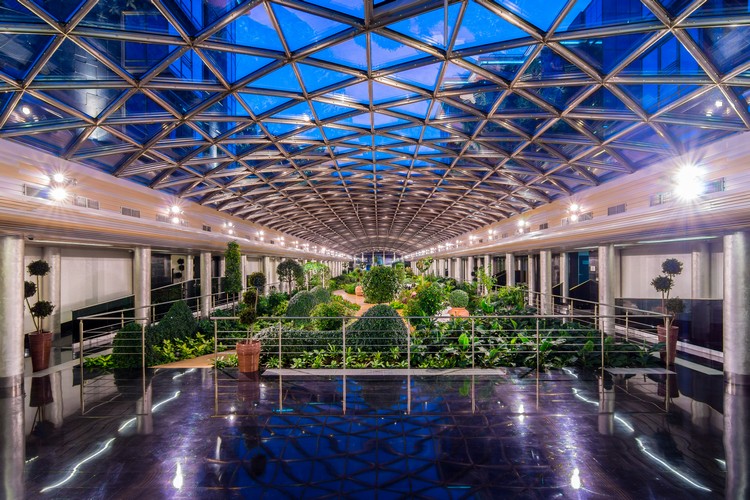Architect Mikhail Kondiayn: “We need government development programs worked out by urban planners”
Mikhail Kondiayn
Architect Mikhail O. Kondiayn, Director General of the Zemtsov, Kondiayn & Partners Architectural Bureau, laureate of the State Prize of Russia and the Prize of the Government of the Russian Federation, member of the City Planning Council of St. Petersburg and a SPbGASU graduate, talks about the search for one’s calling, urban planning policy in Russia, and the momentous projects of the architectural bureau.
– Mikhail, what served as an impetus for you when choosing the profession of an architect?
– I was born and raised in St. Petersburg; my parents are geologists and I went with them on expeditions to the Polar and Polar Urals many times and thought that I would continue their profession. But one summer, together with my friend I went to MARHI I visited the Moscow Architectural Institute (MARHI) where my friend was going to enroll. I was strongly impressed with the projects that hung on the walls there. Those were impressive, large-scale works. I sharply changed my vision of the future profession and began to go to preparatory courses for admission to SPbGASU. I got prepared and enrolled.
– Why did you choose this particular university?
– I had two options: the Academy of Arts and LISI (as SPbGASU was then named). However, our university has always provided more advanced education, training not artist architects, but architect engineers. And this approach to architecture is nearer to me.
– What people, circumstances, projects produced the greatest impact on you during your studies? Whom would you call your teacher?
– The teacher was the surroundings. Our educators were quite democratic, giving us the opportunity to learn from each other and study the world experience. The Japanese Architecture journal produced a very strong influence on me. At that time, the architecture of this country had quite an integral ideology which had impressed me immensely.
✔ Prior to my graduation, Leonid P. Lavrov, then yet a young professor of architecture at the faculty helped me a lot. He had a selection of translated articles on the architecture of residential complexes from around the world. This formed my idea of what to pay attention to, what was important for people, how to do it. I chose the topic “Residential complex in Leningrad” as the theme for my graduation work.
– Do SPbGASU graduates come to work to your architectural bureau? How can you assess their professional level?
– Our young employees are shared approximately equally between the graduates from the Academy of Arts and SPbGASU. Students of our university often come to us for practical training; some of them stay to work. Those who want to achieve something works well no matter what university they graduated from.
I must admit: in order to master the basics of the profession, you need to work in the architectural bureau for several more years after graduating from a higher educational institution, and only then you can consider yourself an architect.
– Would you agree with the statement: “Architecture is becoming more synthetic and influenced by other areas of art and science”?
– Architecture absorbs a variety of ideas, trends and new technical capabilities of our world. For me, the essential thing is not so much the facade of the building, not its appearance, but the lifestyle that forms its architecture. The main thing is that it should be attractive, comfortable and allow the personality to develop. And the shaping and decoration of the building are somewhat secondary.
– What do you think about the relations between the architects and the authorities developing in St. Petersburg nowadays?
– Unfortunately, there are almost no relations. Some projects pass, in fact, without any coordination, without discussion with the Town Planning Council. We are not safe from urban-planning faults, because when one needs to consider a huge number of aspects in each design. Sometimes this does not happen.
The City-Planning Council, which embodies the relationship between architects and the authorities, should be an essential body that helps the authorities ensure the high quality of architectural and city-planning decisions. Unfortunately, this Council deals exclusively with architectural issues, while global urban development problems of St. Petersburg are under the General Plan Research and Design Center.
I would like to point out that presently, the city has no clear urban development policy in the generally accepted sense of the word, as there is no urban development ideology. We lost the Soviet town-planning school and did not get any new one. The old school is obsolete, as completely different relationships have emerged in society. Unfortunately, no new urban planning ideology has appeared, and often this turns into a problem. Development is carried out based on the interests of the land owners who want to get the maximum profit; for the officials, it’s essential to sell the land to the investor to replenish the city budget. What this transaction will bring for the city’s structure, for the transport system and passenger flows, for shuttle migration and job distribution are of no importance to anyone. All this turns into a big shadowed problem. Our city is expanding rather rapidly, but no one is concerned about how to cope with this huge organism in the future. It’s a grand mistake to expect that everything will be settled by the free market.
– How would you assess modern construction in St. Petersburg? Aren’t new areas of the city turning into ghettos of the kind?
– New areas are often some “outskirts”. The fact is, we only declare complex development. While in a new district, a kindergarten, a school and some minimum service facilities are being built, this is far from a complex development, which implies that each new district should be built on the principle of a small city. It should have its own center, its public spaces, and its squares. Enterprises with city-forming functions, such as services, healthcare, and education institutions should be located around the center. And most importantly, each such area should have the maximum possible number of common profession jobs. If this is not the case, then whole the city will be choked with daily labor migration, into which more and more people are drawn daily.
This is partly due to the fact that the City-Planning Council has only purely advisory functions today, while it should play an important role and discuss general issues and problems of the development of St. Petersburg.
– Should the state influence the architectural process?
– It would be more correct to say, to influence urban planning. In Stalin time, architects were dictated what style they should work in. This was an extremely vicious practice: architecture should reflect the development of society itself. If we compare Soviet architecture with that of Europe and America, we will see a big difference. Western architecture followed its unregulated path, not at the behest of authorities.
Urban planning is an area in which specialists must offer the authorities long-lasting development models. And the Government of St. Petersburg or Russia should accept them and approve them as a program. Urban planning is a very complex process, in which economics, legislation, sociology, and industry are involved. All this should be harmoniously intertwined with each other.
– What is the relationship between the architect and the customer today?
– Unfortunately, these relations have never been trouble-free in our country. The status of architects is underestimated nowadays. Before the revolution, the architect would be responsible for spending money, for the progress of construction and had great power at the construction site and a great responsibility. Today, the role of an architect has been reduced almost to the level of attendants. But the status of the architects and the result of their activities are interconnected.
– What projects of your architectural bureau would you consider the most significant?
– One of such projects is the Nevsky Palace Hotel, which demonstrated the idea of preserving the interior spaces of historical residential buildings. Previously, when the neighborhoods were undergoing major repairs, they only left the exterior facades, while totally new buildings emerged inside. The structure of the St. Petersburg courtyards, which could have been preserved, was lost. We created a project of two passages leading from Nevsky Prospect to Stremyannaya Street, which received the silver medal of the World Biennale. Ten years later, one of these passages was implemented at the Nevsky Palace Hotel.
The New Stage of the Alexandrinsky Theater
{gallery name="Кондиайн 042020"}
In the design of the New Stage of the Alexandrinsky Theater, we tried to demonstrate a certain approach to preserving the valuable elements of the old buildings and introducing new functions, new materials and new forms into it. As a result, a space arose in which the old and the new are harmoniously combined. For this project, we received the Prize of the Government of the Russian Federation, the Prize of the Government of St. Petersburg and the Crystal Dedalus Award. Another important work was the competitive project of the International Airport in Pulkovo.
✔ One of the program design projects was a business center and a residential building in Zoological Lane. There was an old dormitory, which was in a critical condition. This building was to be dismantled and recreated anew, and a three-story parking lot has now been built under it. As a result, the building reconstructed with restoration quality got extremely high capitalization and was completely bought out by Gazprom. This is a unique situation: a historically looking building modern inside and with a large parking lot arose in the center of St. Petersburg.
We believe, this is what should be done with the ordinary, low-profile buildings in the center of St. Petersburg in order to remove cars from the streets. It is necessary to provide these houses with comfortable parking lots, modern elevators and utilities. This would give the buildings a new life and allow people who have money to live in the city center in normal modern conditions. If this is not allowed, suburbanization will begin in our city: prosperous people will leave the center for new residential complexes, and communal apartments in which low-income people and pensioners live will remain in the city center. As a result, historical buildings will gradually degrade. The history of developed countries has shown that this is a natural development of an uncontrolled situation (that’s how many ghettos appeared)
– In your opinion, which buildings and structures that have appeared in our city over the past twenty years are the most interesting?
– I would single out premium-segment residential complexes in which the architect had the opportunity to achieve high quality. This happens when the customer does not put pressure on the architect and does not impose pseudo-historicism on him. In a good modern style, for example, the residential complex Docklands is designed. There are separate houses in the city center. For example, I really like the house of architects Reinberg and Sharov, located behind the Kazan Cathedral.
– And what do you think of the new city dominant of the Lakhta Center?
– When a single skyscraper is built, it almost always becomes an issue. A conglomeration of skyscrapers is perceived more easily; it ceases to compete with the main accents and historical dominants. As it is now, this tower contends with the Peter and Paul Fortress and other dominants when looking from certain points, which is rather offensive to our city. Thank God, the skyscraper fled the city center which already was a great success. In the immediate vicinity, the complex is quite interesting and I hope it will develop.
Text: Elena Shulgina
✔ Learn more about the enrollment to the Faculty of Architecture, its teachers and designs







